Potential Honours Projects
Are you a student looking for an Honours thesis project? Our Department has many faculty members working on a range of exciting research initiatives, and there are many opportunities for students to get involved in them as part of their Honour’s thesis. Below you will find some of the potential projects that EES faculty are pitching for the coming year. Click on each faculty member’s pitch to get a better idea of the project, and then contact them directly if you are interested in working with them.
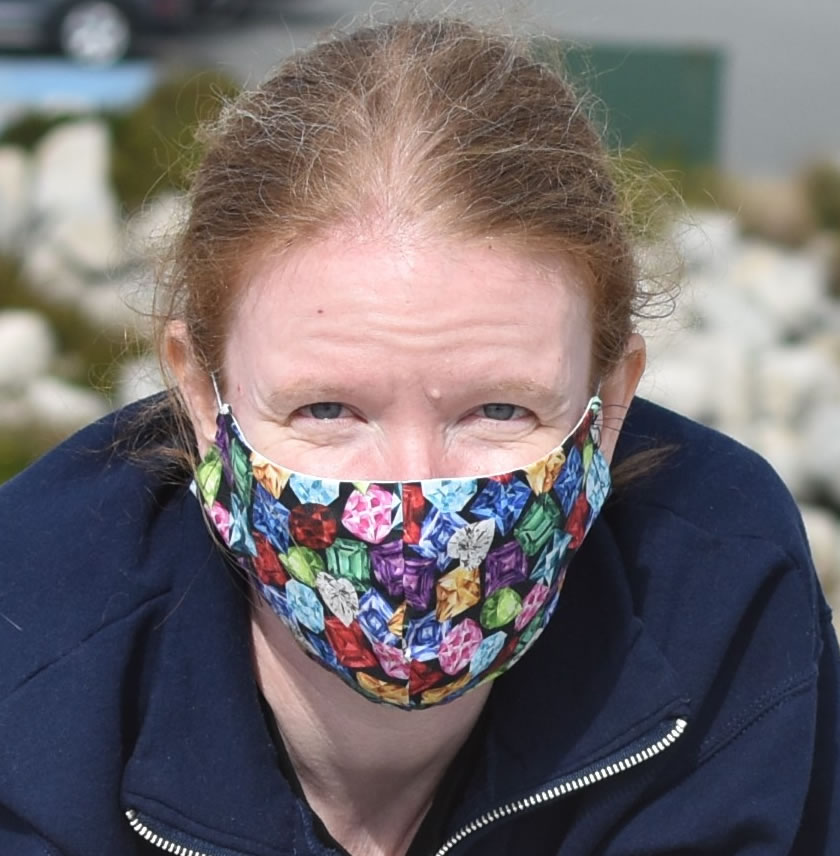 |
Lexie Arnott Instructor Lexie@dal.ca |
Ongoing project
Description: The carbonate islands of Bermuda sit on a volcanic rise of uncertain origin. Although the basaltic flows appear to have originated at the mid-ocean ridge over 100Ma, there are younger intrusions of ultramafic lamprophyre with an unclear source. Two lines of research are proposed for the upcoming year.
Project Title: Study of Biotite in Bermuda Lamprophyres
Description: There is a lack of understanding about the timing of phlogopite crystallization in ultramafic lamprophyres in general, and in the Bermuda Rise, specifically. Petrography and chemistry of the phlogopite will be used to determine whether these are primary or secondary in nature and what the chemistry of the fluids in the rocks. Study may include petrographic work, electron microprobe, and laser ICP-MS.
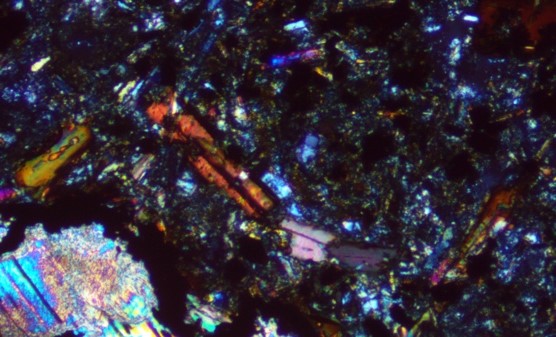
Project Title: Origin of Carbonate in the Bermuda Rise
Description: It has been proposed by some that the carbonate veining in the volcanic rocks is magmatic in origin, related to the silica-undersaturated intrusive rocks. Other propose that it they are recycled marine carbonates. Paragenesis of the veins will be determined using detailed petrologic and geochemical study. Research may include microscopy, electron microprobe, cathodoluminescence, laser ICP-MS, and carbonate isotopes.
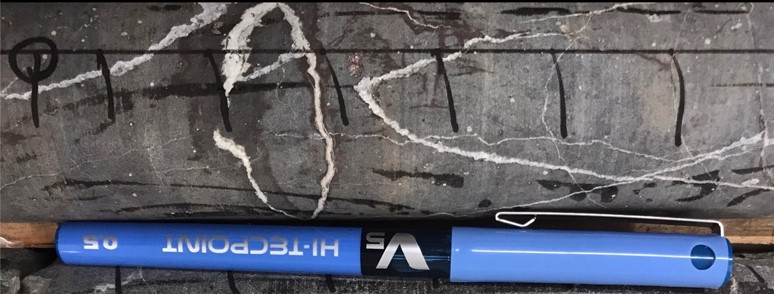
 |
James Brenan Killiam Professor, Departmental Chair JBrenan@dal.ca +1 902 494 2358 |
Project Title: Cation diffusion in biotite and apatite to assess the closure temperature of geothermometers and oxygen barometers
Description: Biotite and apatite are common phases in felsic igneous rocks, but there has been little work done to make full use of various trace element exchange reactions between these minerals to estimate such intensive parameters as crystallization temperature (T) and magma redox state (oxygen fugacity, fO2).
In addition to measurements of trace element partitioning, essential for the development of reliable T and fO2 indicators are constraints on the temperature at which the relevant element exchange effectively ceases, otherwise known as the closure temperature. This parameter will dictate if the conditions recorded are indeed “magmatic”, or correspond to cooling below the solidus. Estimates of closure temperature can be done by conducting laboratory experiments to measure diffusion coefficients as a function of temperature for the various elements of interest in biotite and apatite. Aside from the halogens (Cl, F), Pb, Sr and the rare-earth elements (apatite only), there are no data for diffusion of other elements of interest. In this study, samples of biotite and apatite will be made into
diffusion “couples”, then annealed at high temperature for various durations to generate compositional gradients that will be measured by electron microprobe or laser ablation ICP-MS, depending on the element. From these gradients, diffusion coefficients will be extracted by simple mathematical inversion of the relevant diffusion equations, and the variation in diffusion coefficient with temperature will be used to develop a general expression for the closure temperature. Results will be of fundamental importance to ongoing studies of trace element partitioning relevant to felsic magmas, and the development of thermometers and oxygen barometers specifically applicable to plutonic rocks.
Project 2 Title: Trace element composition of biotite from Meguma basement xenoliths: Constraints on the metal source for the South Mountain Batholith (SMB).
Description: Lower crustal, granulite-facies graphite-bearing pelitic xenoliths occur in dikes emplaced within the Meguma Lithotectonic zone on the Eastern Shore of mainland Nova Scotia. Isotopic evidence indicates that SMB magmas are in part formed by melting or assimilation of such lower crustal material. This project will measure the major and trace element content of biotite (and other phases of interest) within the xenoliths to assess the source of the unusual enrichment in certain ore metals (Li, Sn, Ta, U) in the SMB.
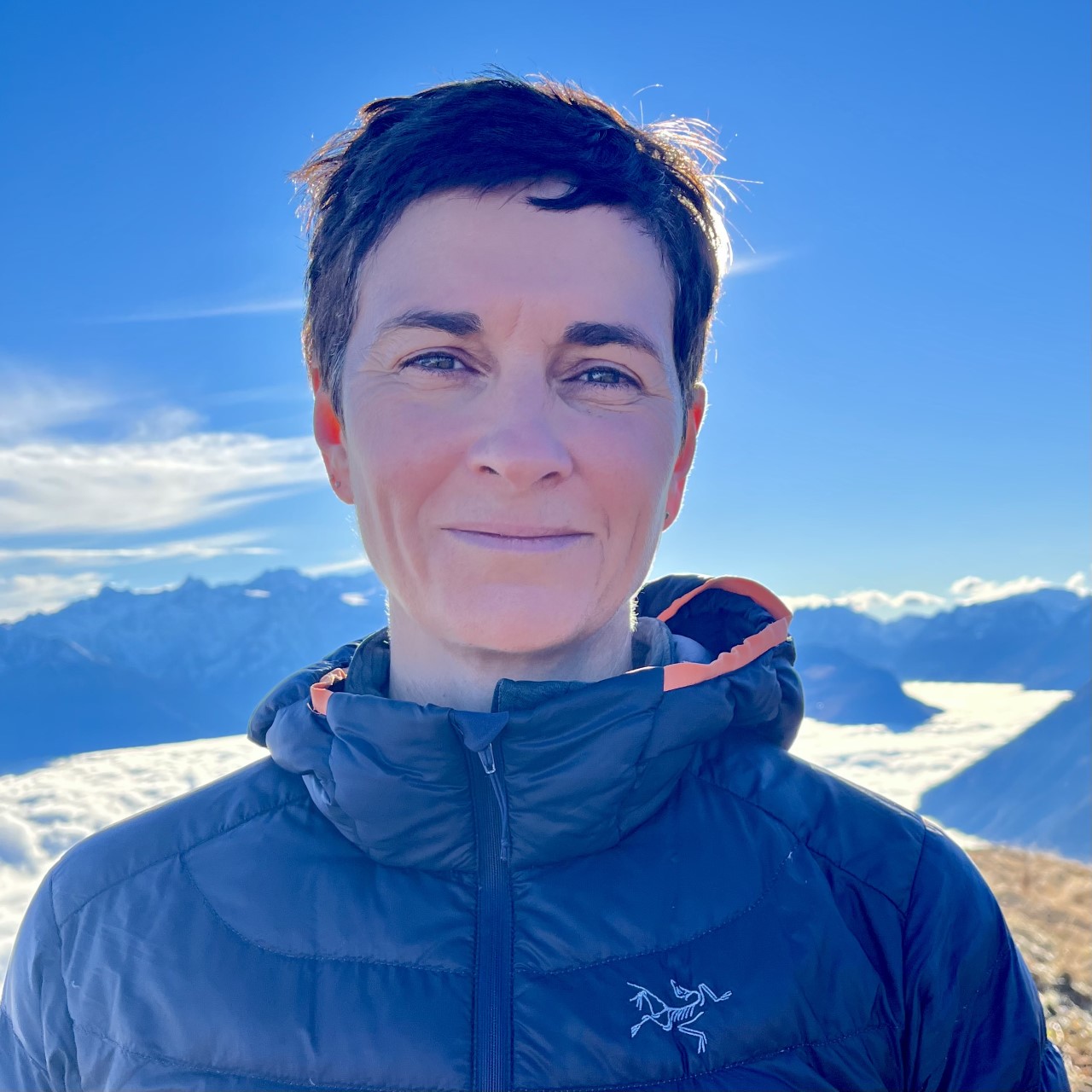 |
Isabelle Coutand Associate Professor icoutand@dal.ca +1 902 494 7827 �� |
Project Title: Constraining the timing of forearc unroofing along the Hikurangi margin (New Zealand) using (U-Th)/He thermochronometry
Short description: The aim of this research project is to prepare and analyse between 5 to 10 rock samples collected along a transect crossing the inner forearc of the Hikurangi margin in the Southeastern part of the North Island of New Zealand. There, the Pacific Plate is subducted underneath the Australian plate since the late Cenozoic and the convergence has generated extensive continental deformation triggering unspecified amount of crustal unroofing. This project includes extensive laboratory work and is suitable for students interested in Geochronology and Tectonics.
 |
Richard Cox Instructor Richard.Cox@dal.ca +1 902 494 3362 |
Project Title: Lunar Meteorites and the Early Evolution of the Lunar Crust
Description: The lunar crust is dominated by anorthosite, which forms much of the lunar highlands, the bright and heavily cratered areas that you can see on the moon with the naked eye. This is at least 4.35 billion years old (Barboni et al. 2017) and is thought to have formed over a ~200 million year period. The anorthosites are thicker on the farside (~30-50 km) versus the nearside of the moon where they reach zero thickness in the Mare impact basins, the dark areas visible on the moon’s surface. The anorthosites are thought to have formed from a planetary-scale, magmatic fractionation process as suggested by the original lunar magmatic ocean (LMO) model (Smith et al. 1970; Wood et al. 1970). The LMO model suggests an early, 1000km deep, molten lunar surface developed and was enriched in plagioclase. Being less dense, the plagioclase floated to form the anorthosites of the lunar highlands. There are now several models supported by increasing volumes of data that suggest more complex formation mechanisms. The onion-skin model suggests a LMO with limited circulation under an initially thin, quenched crust. This produced rapid accumulation of anorthosites and minor, interstitial, mafic liquids. Tidal overturning of the plagioclase cumulates then prolonged the crystallization times (Elkins-Tanton et al. 2011). A second model, which attempts to also explain the asymmetric nature of the lunar crustal thicknesses, suggests that circulation may be the result of a giant impact which caused early differentiation of the nearside and farside lunar surfaces (Aria et al. 2008). A third model suggests that serial magmatism, and recycling of crystallizing plagioclase into a pre-existing quenched crust, produced the variety of assemblages found in many lunar samples (Gross et al. 2014). Another recent model suggests that modification of the initial crust formed from the LMO was aided by widespread early bombardment. This in turn created a series of magma seas that differentiated to result in the observed compositional variations in the lunar highlands (Vaughan et al. 2013). In this study, we will examine a small suite of lunar meteorite samples which has recently been obtained, including several pieces of NWA 11474 and NWA 12593. These meteorites are lunar breccias and contain clasts of anorthosite and mafic minerals. The first part of the project will involve a detailed documentation of the variations in mineral compositions in these samples. This will allow the range in lunar anorthosites represented to be determined. Preliminary crystallization temperatures will also be calculated using this data. Minor elements such as Sr, Ba and rare-earth elements including Eu will also be measured. Published distribution coefficients for trace-elements in plagioclase crystallizing from a LMO (Sun et al. 2017) will be used to determine whether these samples crystallized from a single-composition magma or represent more than one phase of crystallization from several magmas. Results will be compared with other studies to help refine the models of lunar crustal formation. Students interested in this project should contact Dr. Richard Cox (richard.cox@dal.ca).
Project Title: Thermobarometers Applied to Granitic Rocks
Description: Granitic rocks are ubiquitous to most tectonic settings and form a wide range of magmatic units from small-scale melts (leucosomes) in migmatites, to dykes and sills, to intrusive complexes at various scales from small plutons to very large batholiths. One of the most challenging aspects in studying granitic rocks is determining the pressure and temperature ranges recorded during emplacement. This is particularly true for larger granitic complexes where contact metamorphic zones tend to record the final stages of cooling and final depth of emplacement. In this project we will examine mineral assemblages from a number of granitic plutons including the Halifax pluton, which forms part of the South Mountain Batholith, the La Baie granite from near Chicoutimi, Quebec, and the Strontian granite from the south-west Highlands of Scotland. These examples are all related to orogenic activity but were emplacement at different stages of metamorphism within these orogenic belts. In addition, these samples contain different mineral assemblages and textures which offer different possibilities in terms of analysis of mineral thermobarometers to determine the range of pressure and temperature conditions. Among the possibilities are two-feldspar thermometry, Al-in-hornblende barometry, plagioclase-hornblende thermometry, apatite-biotite thermometry, the use of multi-equilibrium assemblages, and a range of accessory mineral thermometers / barometers such as Ce- and Ti-in zircon and Zr-in-titanite and rutile. The goal of this project will be to produce complete PT-paths for at least one these intrusions. The research will involve detailed petrography and analysis using the electron microprobe at �¼������ϲʿ���ֱ��. A number of samples have already been studied, and this data will also be available to help with the final interpretation. Students interested in this project should contact Dr. Richard Cox (richard.cox@dal.ca).
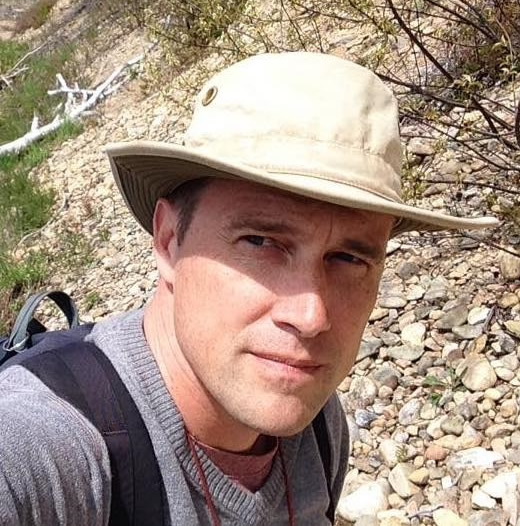 |
Tim Fedak Adjunct Professor Curator of Geology, Nova Scotia Museum tim.fedak@novascotia.ca |
Project Title: Museum Collections-Based Research
Nova Scotia Museum, Geology Collections
The topics and collections below may be of interest for undergraduate honours research projects. The curator can co-supervise research and facilitate access to relevant museum collections for new research. Contact the Curator to discuss interest and potential projects. tim.fedak@novascotia.ca
Sand/Soil and Mineralogy
- Specimens for comparative studies to support studies of micro-plastics in modern environment. Historic samples back to 1870s.
- Agate: Microstructural studies of systematic collections.
Invertebrate Palaeontology
- Silurian collection from Arisaig, also McGill: Studies of morphological variation and taphonomy. brachiopods, cephalopods, starfish.
- Carboniferous Windsor Group, with Acadia: Stratigraphic collections include type specimens.
Carboniferous Palaeobotany
- Cape Breton Fossil Plants, with CBU: Carboniferous palaeobotany, Zodrow collection and historic collection from 1860s.
- New, unique preservation of fossil trees in gypsum evaporites.
Interglacial Palaeobiology - Mastodon Sinkholes of Nova Scotia
- Ongoing description and analysis of samples collected from 1990s.
- Mastodon bones, wood turtles, painted turtles, wood, moss, seeds, and unprocessed mud samples. ~80,000 years old.
Curation and 3D Digitization - Permian Trackways
- 3D digitization of reference collection that was collected in 1994.
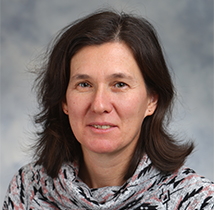 |
Yana Fedortchouk Associate Professor; Co-Director - Experimental High Pressure Geological Research Laboratory yana@dal.ca +1 902 494 8432 �� |
Project Title: Emplacement and composition of kimberlite melts and problem of diamond survival
Description: Kimberlites are exotic but very important volcanic rocks, which are the main primary source of diamonds and also the deepest magmas that reach the surface of the Earth. The origin of kimberlites is linked to processes in the subcontinental mantle and is still poorly understood. Due to their complex composition, we still do not know the composition, origin, and eruption conditions of kimberlites. Diamonds grow deep in the Earth’s mantle where they get picked by kimberlite magma and brought to the surface during fast kimberlite ascent. High-temperature kimberlite magmas are destructive for diamonds and diamond survival depends on the crystallization conditions and ascent rate of kimberlites. The two following experimental projects will help to address some of these questions.
Project 1: Experimental study of the effect of kimberlite crystallization conditions on diamond dissolution rate
Diamond dissolution in kimberlite magma during its ascent can make a large impact on diamond grade of a kimberlite pipe. Previous experimental studies examined the effect of temperature, pressure, oxygen fugacity and melt composition on diamond dissolution rate. However, the existing data has many gaps in experimental conditions which preclude development of a comprehensive model for diamond dissolution. Furthermore, the effect of solvent (melt vs. fluid) and its composition on diamond dissolution rate is very poorly constrained.
This study will conduct a series of high-pressure-temperature experiments using piston-cylinder apparatus to fill the gap in the existing experimental dataset. Especially the focus will be on exploring the effect of kimberlite composition on diamond dissolution. The results will be incorporated with a database of the existing experimental data to develop a model for calculating diamond dissolution rate using Matlab or another modelling software.
This study will provide 1) an important tool for calculating diamond preservation for various T-P-time scenario of kimberlite ascent; 2) comparison of the results of this calculation to the existing estimates of kimberlite crystallization conditions will allow to put better constraints on kimberlite ascent rate.
Project 2: Experimental study of kimberlite crystallization
Hypabyssal kimberlite is the best representation of kimberlite melt composition. Hypabyssal kimberlites from worldwide localities shows seven mineral phases in the groundmass, which represent crystallization from kimberlite magma. However, experimental studies producing these mineral phases are extremely limited and do not allow to examine the role of volatiles and temperature. Towards this end, high-pressure-temperature experiments will examine liquidus phases and crystallization sequence in kimberlite melt at 1000 – 1200oC and pressure 0.5 – 1 GPa. The effect of volatiles (H2O and CO2) will be examined. Experiments will be conducted in piston-cylinder apparatus and examined using Scanning Electron Microscope and Electron Microprobe analyses. This study will shed more light on the composition of kimberlite magma.
 |
Susan Gass Senior Instructor susan.gass@dal.ca +1 902 494 4530 |
Research areas: Urban biodiversity and environmental education
Please contact Sue to discuss potential projects in these fields.
In development: Climate Change Misconception Education Research Project
Please contact Sue if you are interested in this project.
Community perceptions of hemlock trees in parks and recreative spaces and the use of pesticides to treat for hemlock woolly adelgid
Please contact Sue if you are interested in this project.
 |
Djordje Grujic |
Project Title: Brittle-Ductile transition along seismogenic faults
Aim of the project: Identify deformation processes that enable the continuum of stress along continental megathrusts.
Objectives: Microstructural investigation of thin sections from shear zones that have undergone a transition from crystal plastic to frictional deformation. Microstructural observations will be performed using a petrographic microscope and a scanning electron microscope. Mineral phases will be identified using the electron microprobe.
Qualifications: courses in Structural Geology and Metamorphic petrology.
Bonus: technical writing skills, meticulous work in a research lab, and high motivation for academic research.
  |
Sian Kou-Giesbrecht Assistant Professor sian.kougiesbrecht@dal.ca |
Project Title: Modelling leaf nitrogen in the Canadian boreal forest
Nitrogen is an essential limiting nutrient to forest growth, especially at high latitudes, and is thus important to model accurately in climate change models. The aim of this project is to compare how well the Canadian Land Surface Scheme Including Biogeochemical Cycles (CLASSIC) models various aspects of the carbon cycle (e.g., gross primary productivity and net ecosystem exchange) and compare this to the nitrogen cycle (specifically, leaf nitrogen measurements) at an established site at the southern border of the Canadian boreal forest.
Project Title: Soil nitrogen measurements
Nitrogen is an essential limiting nutrient to forest growth, especially at high latitudes, and it is thus important to understand drivers underlying its spatial patterns. The aim of this project is to examine drivers of soil nitrogen observations measured by the National Forest Inventory (NFI) of Canada. Underlying drivers of soil nitrogen will be explored and compared to those of soil carbon.
 |
Amy Mui Instructor & Academic Advisor amy.mui@dal.ca +1 902 494 4197 �� |
Project Title: Conservation of freshwater turtles
Description: Native freshwater turtles are declining worldwide and practical methods of reducing mortality are urgently needed. In collaboration with the Chemistry Department and the NS Turtle Patrol, this project will investigate the role of the olfactory landscape and its potential for decreasing predation of turtle eggs during the sensitive 24-48 hours post nesting. This project involves a fieldwork component, and a vehicle is required. This particular project is not likely to be eligible for the GIS certificate. Students may also propose their own topics which can be discussed based on data availability and resources. All projects are pending ethics approval.
Project Title: Mapping wildlife habitat, connectivity, and measures of fragmentation
Description: Species are declining at an alarming rate across the globe and there is a need for spatial-temporal methods of analyses to contribute information to conservation management. Open data on biodiversity, protected areas, and landcover type among others are widely available to support research in this area. Potential projects are possible and up to student interest and skill level and can include research on habitat change over time, examining wildlife-human interactions, modeling landscape connectivity, developing change models over time, and quantifying fragmentation and time to extinction. Students with skills in geospatial analysis, R coding, and/or remote sensing would be well-suited to this type of research.
 |
Sophie Norris Postdoctoral Fellow sophie.norris@dal.ca |
Project Title: Paleohydraulic reconstruction of glacial Lake Shubenacadie, Nova Scotia (co-supervised with John Gosse)
Description: High magnitude freshwater floods associated with the decay of ice masses have been widespread in Earth’s history resulting in intense erosion and the carving of large spillways. Reconstructions of the largest of these deglacial events infer that their freshwater output had the potential to cause abrupt changes to global climate via the disruption of ocean circulations patterns. Despite the inferred broader significance of such floods, the lack of depositional features associated with many of these floods has resulted in a scarcity of physically constrained numerical simulations.
Glacial Lake Shubenacadie was a short-lived proglacial lake that formed in central Nova Scotia as ice retreated at the end of the last glacial period. Although this lake considerably altered the region leaving a clear geomorphic imprint, there is a scarcity of research relating to its genesis and the palaeohydraulics of its drainage. This study would use high resolution LiDAR imagery to identify lake shorelines and other geomorphic features to reconstruct lake evolution. Using a HEC-GeoRAS/HEC-RAS system within a GIS the peak discharge and duration of the lake drainage event would then be reconstructed. Results will then be compared to pre-existing glacial lake outburst models and used to highlight areas of possible lake-shore archaeological sites.
Co-supervisors: Dr. Sophie Norris and Professor John Gosse
Students interested in this project should contact Dr. Sophie Norris (sophie.norris@dal.ca)
 |
Owen Sherwood Assistant Professor owen.sherwood@dal.ca +1 902 494 3604 |
Project Title: Reconstructing seasonal changes in phytoplankton community composition using a novel carbon isotope technique
Description: The Northwest Atlantic Ocean off Nova Scotia is undergoing some of the most rapid warming of any ocean region on Earth. To better predict how this warming will affect patterns of marine productivity in the future, we need better paleo-proxy data from the past. As a contribution toward this overall goal, an honours student is invited to validate a new organic geochemical approach (compound-specific isotope analysis of amino acids) on samples of marine algae collected periodically over a spring-to-winter cycle. Specifically, we will test whether the seasonal transition from large-cell, diatom-based production in spring, to small-cell, flagellate-based production in summer is reflected in carbon isotopic signatures of seawater filtrates. The student will carry out field work locally in Bedford Basin and the Northwest Arm (must be able to begin field work in April) and perform wet chemistry sample derivatization and mass spectrometric analysis in the Stable Isotope Biogeochemistry Laboratory. This research will support the ongoing work of two PhD students and several MSc students. Contact: Dr. Owen Sherwood: owen.sherwood@dal.ca
 |
Shannon Sterling Associate Professor shannon.sterling@dal.ca +1 902 494 7741 |
Research Area: Impact of precipitation events on stream alkalinity and acid episodes in Nova Scotian rivers, and potential impacts of climate change
Please contact Shannon to discuss potential projects in this field.
 |
Tarah Wright Professor Tarah.Wright@dal.ca +1 902 494 1831 |
Project Title: Measuring Pre-School Children’s Connection to Nature at the St. Louis Zoo
Description: Nature exposure is proven to be crucial for children’s development by enhancing their physical and mental well-being, encouraging independence, creativity and problem-solving skills, and nurturing a deeper appreciation for nature. Further, one’s connection to nature is positively correlated with developing pro-environmental attitudes, knowledge and beliefs as an adult, and increasing the probability of conservation behaviours and attitudes later in life. This Honours thesis study will build on the work of Omidvar and Wright (2019) and MacKeen & Wright (2021) in which a connectedness to nature games testing tool was developed, tested and then modified to be more culturally, geographically and developmentally appropriate to the age of the participants and location in which the individual study takes place. The newly modified games testing tool has undergone reliability and validity testing in 20221 using psychometric assessment techniques. We are looking for an Honours thesis student who will support the research team in the further testing of the tool. The Honours student will take the lead in working with staff at the St. Louis Zoo to modify the tool to be culturally, geographically and developmentally appropriate for the pre-school children in the St. Louis Zoo program, train the St. Louis staff to administer the games testing tool, and then take a lead role in analyzing the results (both qualitative coding and statistical techniques will be employed). Students interested in this project should contact Dr. Tarah Wright (tarah.wright@dal.ca).
 |
Miao Zhang |
Project Title: Seismological Investigation of Blasts Near Halifax
Description: The aim of this project is to investigate quarry/mining blasts near Halifax using a broadband seismic station in Halifax. Furthermore, these blasts serve as seismic sources for constructing layered velocity models of the region. This project heavily relies on computer programming and digital data analysis, requiring a significant time commitment. Students interested in this project should contact Dr. Miao Zhang (miao.zhang@dal.ca) at least three months before the class begins to ensure they can receive timely prerequisite training.
